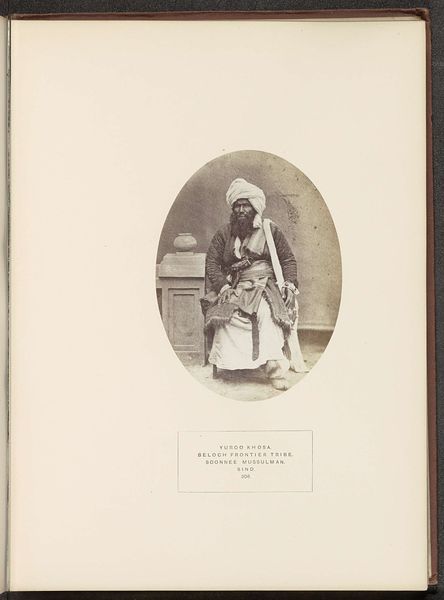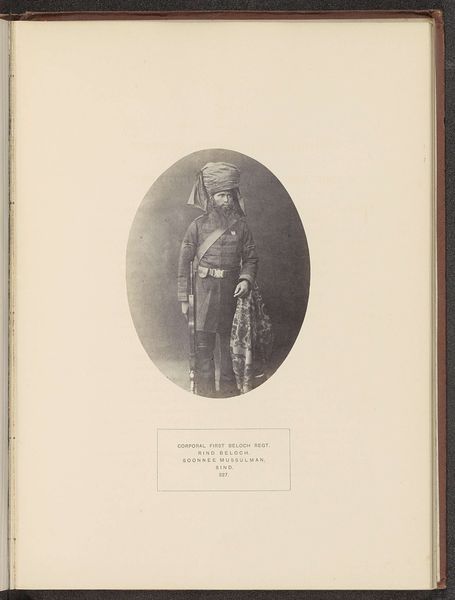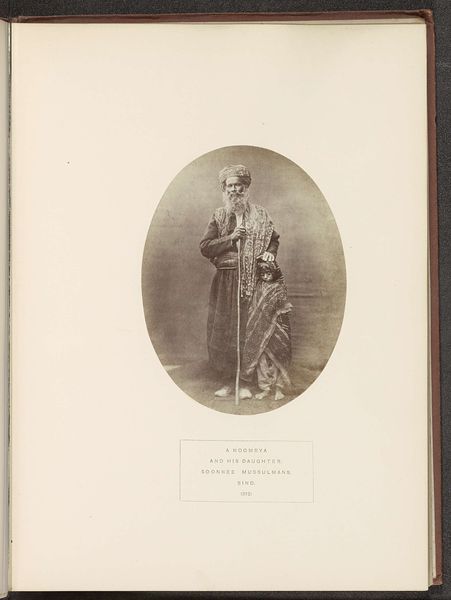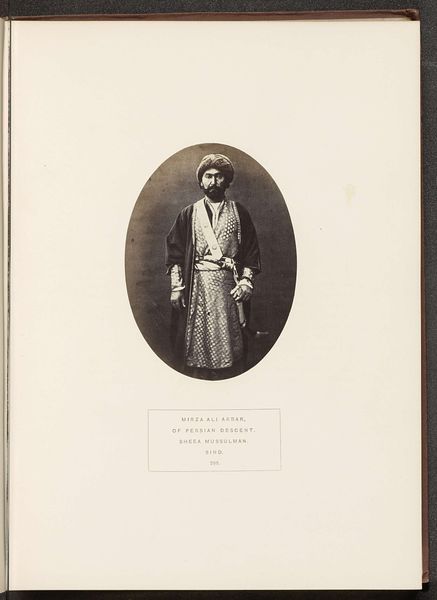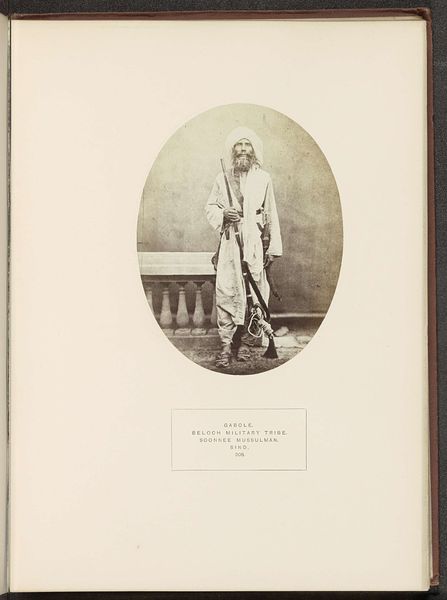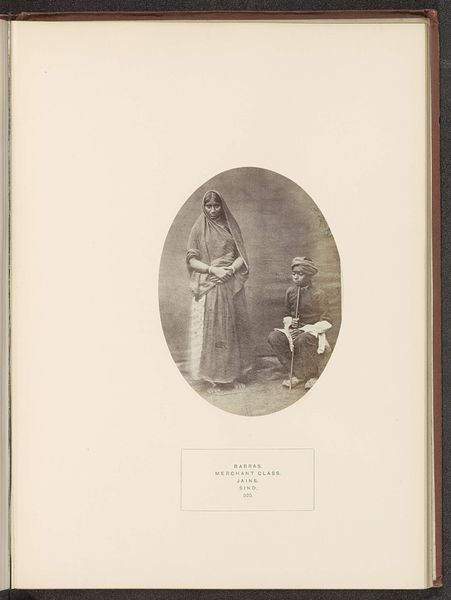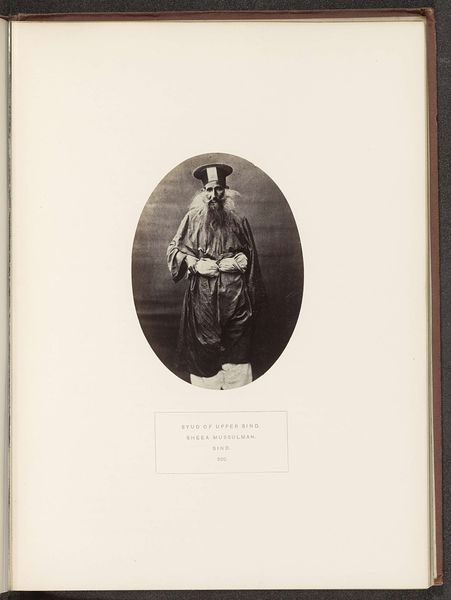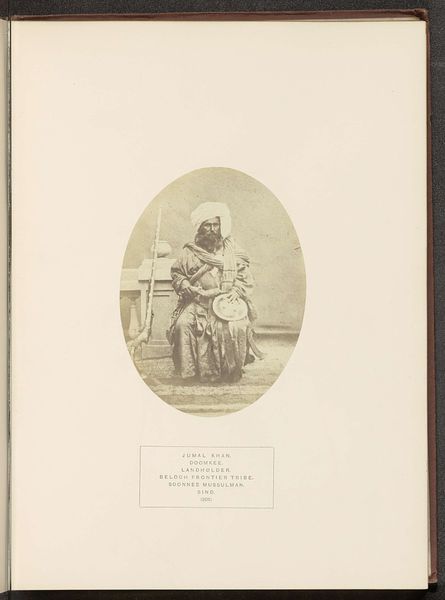
photography, albumen-print
#
portrait
#
photography
#
orientalism
#
albumen-print
#
realism
Dimensions: height 147 mm, width 109 mm
Copyright: Rijks Museum: Open Domain
This portrait of an unknown Sikh from Punjab was made in the 19th century by Henry Charles Baskerville Tanner, employing photography, a relatively new medium at the time. The photographic process itself, reliant on specialized equipment and chemical knowledge, reflects the rise of industrial capitalism and the commodification of images. In contrast to the tradition of painted portraits commissioned by the wealthy, photography offered a semblance of democratization, capturing likenesses for a broader segment of society. The sepia tones and the subject's ornate attire, carefully arranged for the camera, speak to the cultural context of colonial India and the photographer's attempt to document and categorize its inhabitants. It is important to remember that the act of photographing is itself a construction, one that invites us to consider the power dynamics inherent in the colonial gaze. The image freezes a moment in time, inviting consideration of the labor involved, and the wider social and political narratives it represents.
Comments
No comments
Be the first to comment and join the conversation on the ultimate creative platform.
